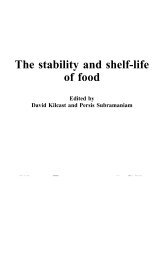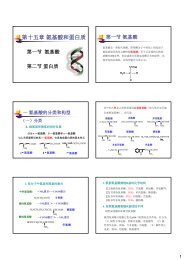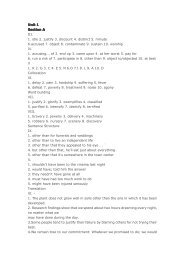Controlled Atmosphere Storage of Fruits and Vegetables, Second ...
Controlled Atmosphere Storage of Fruits and Vegetables, Second ...
Controlled Atmosphere Storage of Fruits and Vegetables, Second ...
Create successful ePaper yourself
Turn your PDF publications into a flip-book with our unique Google optimized e-Paper software.
12 Chapter 2●●●formation <strong>of</strong> undesirable flavour <strong>and</strong>odoursaltered texturedevelopment <strong>of</strong> physiological disorders.Thompson (2003) also reviewed some <strong>of</strong> theeffects <strong>of</strong> increased CO 2levels on stored fruits<strong>and</strong> vegetables as follows:●●●●●●●●●●●●●●●●decreased synthetic reactions in climactericfruitdelaying the initiation <strong>of</strong> ripeninginhibition <strong>of</strong> some enzymatic reactionsdecreased production <strong>of</strong> some organicvolatilesmodified metabolism <strong>of</strong> some organicacidsreduction in the rate <strong>of</strong> breakdown <strong>of</strong>pectic substancesinhibition <strong>of</strong> chlorophyll breakdownproduction <strong>of</strong> <strong>of</strong>f-flavourinduction <strong>of</strong> physiological disordersretarded fungal growth on the cropinhibition <strong>of</strong> the effect <strong>of</strong> ethylenechanges in sugar content (potatoes)effects on sprouting (potatoes)inhibition <strong>of</strong> postharvest developmentretention <strong>of</strong> tendernessdecreased discoloration levels.The recommendations for the optimum storageconditions have varied over time duemainly to improvements in the control technologyover the levels <strong>of</strong> gases within the stores.Bishop (1994) showed the evolution <strong>of</strong> storagerecommendations by illustration <strong>of</strong> the recommendationsfor the storage <strong>of</strong> the apple cultivarCox’s Orange Pippin since 1920 (Table 2.1).CA storage is still mainly applied toapples, but studies <strong>of</strong> other fruits <strong>and</strong>vegetables have shown it has wide application,<strong>and</strong> an increasing number <strong>of</strong> crops arebeing stored <strong>and</strong> transported under CAconditions. The technical benefits <strong>of</strong> CAstorage have been amply demonstrated fora wide range <strong>of</strong> flowers, fruits <strong>and</strong> vegetables,but the economic implications <strong>of</strong> usingthis comparatively expensive technologyhave <strong>of</strong>ten limited its commercial application.However, with technological developments,more precise control equipment<strong>and</strong> the reducing cost, CA storage is beingused commercially for an increasing range<strong>of</strong> crops.The question <strong>of</strong> changes in quality <strong>of</strong>fruit after long-term storage is important.Johnson (1994a) found that the storage practicesthat retard senescence changes in applesgenerally reduced the production <strong>of</strong> volatilearoma compounds. Reduced turnover <strong>of</strong> celllipids under CA conditions is thought toresult in lack <strong>of</strong> precursors (long-chain fattyacids) for ester synthesis. The lower O 2levelsrequired to increase storage duration <strong>and</strong> tomaximize retention <strong>of</strong> the desired texturalcharacteristics can further reduce aromadevelopment. Using hydrated lime or activatedcarbon to reduce the level <strong>of</strong> CO 2didnot affect aromatic flavour development,although there may be concern over continuousflushing <strong>of</strong> N 2/air mixtures. The prospect<strong>of</strong> improving flavour in CA-stored apples byraising O 2levels prior to the opening <strong>of</strong> thestore is limited by the need to retain texturalquality.Table 2.1. Recommended storage conditions for Cox’s Orange Pippinapples, all at 3.5 °C (Bishop, 1994).O 2(%) CO 2(%) <strong>Storage</strong> time (in weeks)Approximate date <strong>of</strong>implementation21 0 13 –16 5 16 19203 5 21 19352



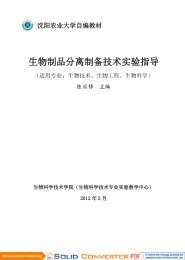

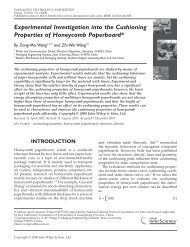
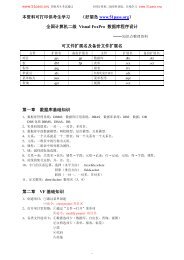
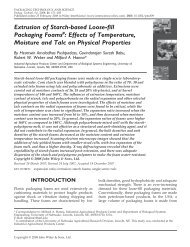
![()] 1](https://img.yumpu.com/45117883/1/190x143/-1.jpg?quality=85)
